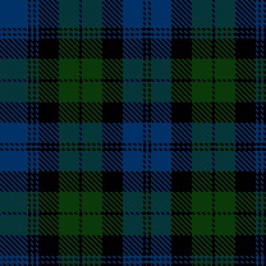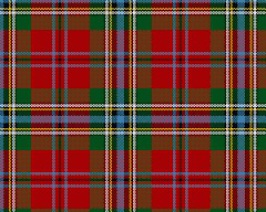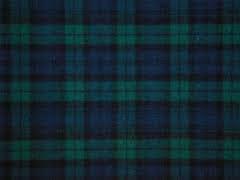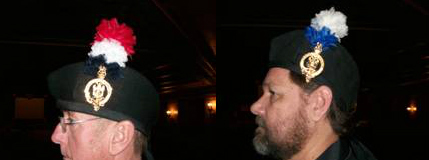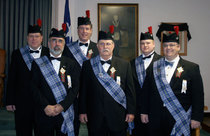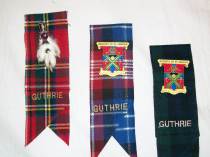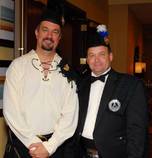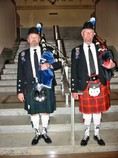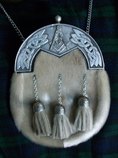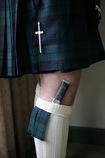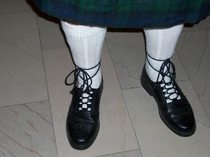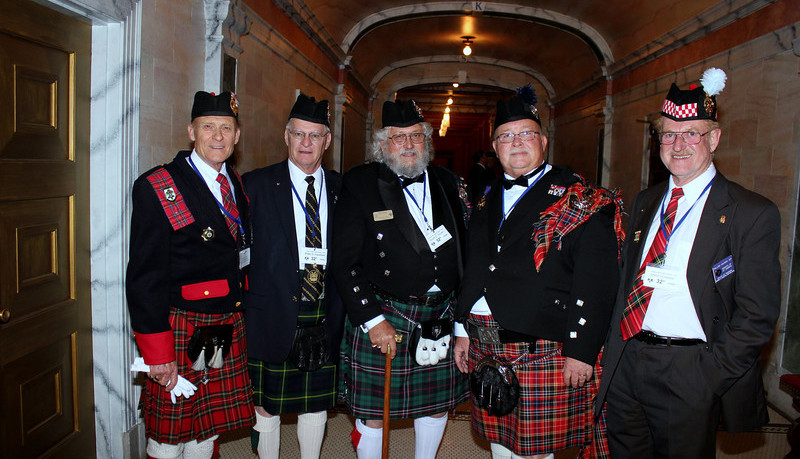
Attire -
Tartan Day Observances
In the United States, Tartan Day is observed on April 6th and if usually marked with parades and bag pipe concerts. Check the history of Tartan Day at this website: Tartan Day
Highland Attire -For Your Review and Consideration
One of the considerations facing each new Knights of St. Andrew Chapter is that of Attire. Scottish Casual? Highland Formal? Individual? or Chapter Uniformity. Here are some links that lead to photos, sketches and text about Scottish Highland Attire. Remember, we do not endorse any supplier or vendor. We have, however, reviewed these sites and have decided they may expand your knowledge of the subject of attire.
Going to Wear the Kilt? -from the United Grand Lodge of Brisbane, Australia.
What this Clan Wears -provided by the Clan Campbell Sociery (North America).
Kilt Guidelines -Henderson Group; Uniforms and Pipes
How to Wear Highland Dress -Piping Press
...commonality in our uniqueness...
A part of the uniqueness of each KSA Chapter, across the country, is the manner of their dress. From tuxedos to kilts; prayer caps to glen gharries- our groups offer a variety. Here are some fundamentals about Chapter attire. Here are some definitions and examples of KSA attire.
Although there is no "authorized" supplier of KSA merchandise, you should review the links that have been assembled on our SOURCES page. We do not guarantee the reliability of these sources but they have been used by some Chapters. Advise us if you have other links you recommend.
Caps –
Glen Gharry caps are the most prevalent among our Chapters. This cap resembles an “over-seas” military cap. They are usually black with a red ball in the center of the top and two ribbons extending from the back. Another Scottish cap popular with KSA Chapters is the Balmoral which resembles a French Beret.
Cap Badges –
Several types of Cap Badges are available commercially. Often the Badge indicates status within the Chapter. Shown here is a gold colored badge indicating the wearer is an elected officer. Members who are not in the elected line wear silver cap badges.
Hackles –
Feathers are a typical addition to a Cap and usually indicate rank. The hackle above (on the right) tells us that the wearer is a Past Venerable Master. In this particular Chapter, members are issued Green Hackles when knighted; blue when elected to an office; white when serving as the Venerable Master; blue and white as a Past Venerable Master; and tri-color Red, White, and Blue as a PVM who has been granted Honors (KCCH or 33rd) pictured on the left. An emeritus member who did not serve as VM will wear a Red hackle. The colors and their meanings vary greatly among Chapters but are usually an indication of the current status of the wearer.
Sash & Broach –
A Sash of the same tartan as the kilt is often worn with Scottish attire. Some Chapters wear an over-the-shoulder sash (especially with informal wear & Jacobite blouses). Some use the Sash draped across one shoulder; front and back; crossing at the opposite side of their waist. A large Broach displaying one Scottish or KSA motif anchors the Sash.
San Antonio Officers with Sashes
Tartan Swatch & Pin –
As an identifier, a swatch of Tartan material is often worn on the shoulder of jacket or coat when not wearing a kilt uniform. This swatch usually displays the KSA badge as a pin. The color and tartan weave often distinguishes (l-r) Charter Members, Member and Emeritus Members from others.
Blouse –
Jacobite (Peasant or Poet) Shirt
Informal wear often includes a Jacobite blouse (shirt). Known by several names, this style of shirt usually ties in the front with leather lacing; is generally lose fitting and has puffy sleeves. Such shirts are most often white or light tan (flaxen) in color and worn with a Sash but no jacket or vest.
Tuxedo Shirt
Formal wear may dictate a pleated Tuxedo Shirt. Usually a bow tie is a part of this outfit but neckties with Scottish Rite or KSA designs are also seen. Some neckties are simply made from the kilt tartan material.
Jacket –
The “Prince Charlie” Jacket is worn most commonly. – not named for the present Prince of Wales – has a cut-away waist and usually has large square or round buttons on the front, back and sleeves. Tuxedo Jackets are also seen among KSA Knights.
Kilt –
Each Chapter usually has a “recommended” Kilt tartan (weave design). Blackwatch is the most common, it being a “public” tartan (use not regulated by a family or clan). Most Chapters allow a Knight to wear his family designation tartan if one exists. There is now a National Masonic Tartan in tints of blue that is available for use by any Masonic affiliated organization.
Belt and Buckle –
Belts are traditionally wide and Buckles often display Scottish, Masonic or KSA symbols. Remember that the wide belt must support the Kilt, Sporran – and historically – a sword.
Sporran –
“What do you carry in your purse?” is one of the most frequent questions asked of a Knight. The “purse” is actually a Sporran. These come in a variety of sizes and styles. Usually the Chapter accepts choice of Sporran as a personal choice or may request that a certain color be prevalent.
Kilt Pin –
Mostly decorative today, the Kilt Pin is placed on the hem of the overlapping side of the Kilt. A Kilt Pin can be used to close the open flap on windy days.
Sgian Dubh Knife –
The “Sock Knife” is often a gift from a senior Knight to an initiate. The tradition is that one does not take a concealed offensive weapon into the home of another. The Sgian Dubh is visible and can be used to cut food if needed.
Kilt Hose and Garter Flashes –
Traditionally, Kilt Hose or stockings are heavy knitted socks with rolled tops. The top has Flashes sewn in or tied around the leg. The purpose today is mostly ornamental while historically they held up the wearer’s warm socks.
Ghillie Brogues –
The shoes work by KSA Knights are often black dress shoes but the strict purists of attire will wear Ghillies- shoes with long strings that are wrapped and ties around the ankles.
Swords and Daggers –
While some Knights choose to carry a Sword or Dagger at their waist, most Chapters discourage or prohibit carrying of such weapons. Swords have a ceremonial purposes in processionals and knightings but may lead to accidents or misunderstandings when work as general attire.

